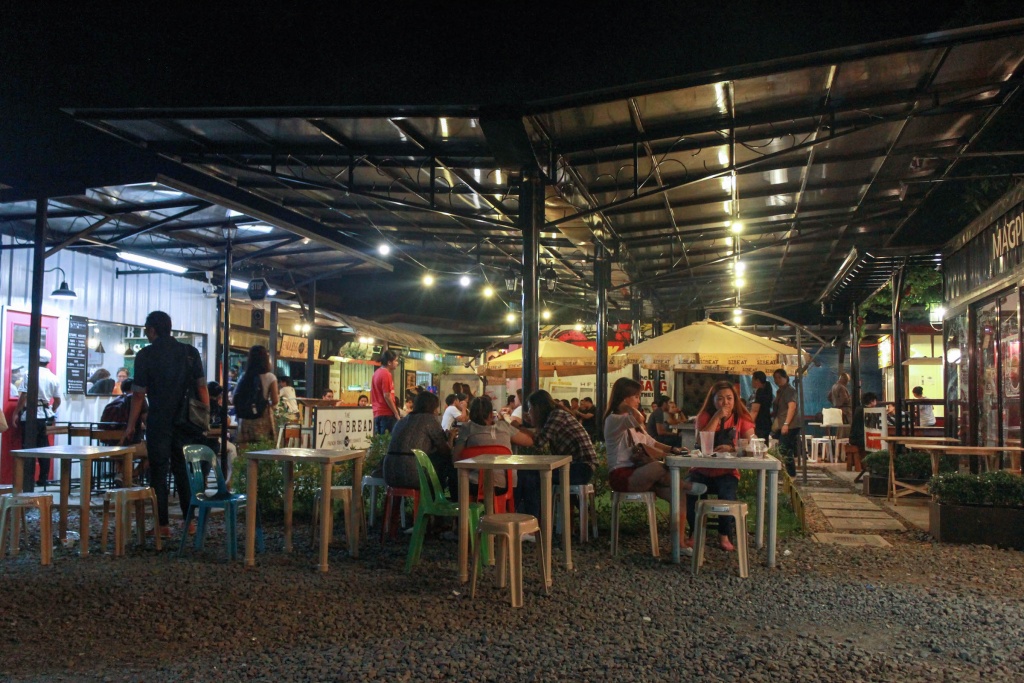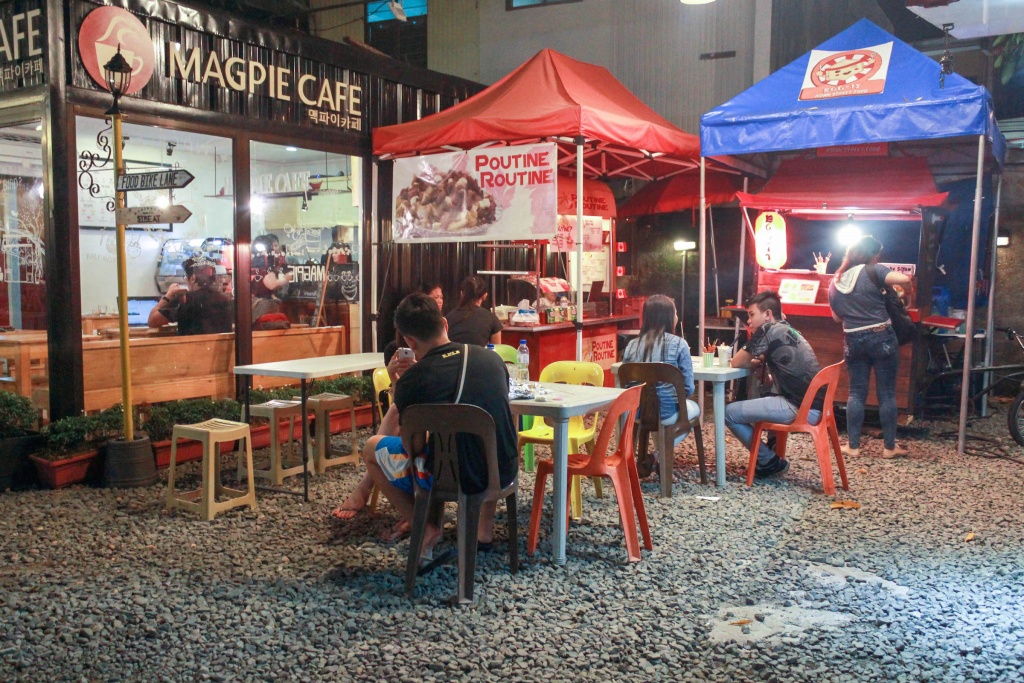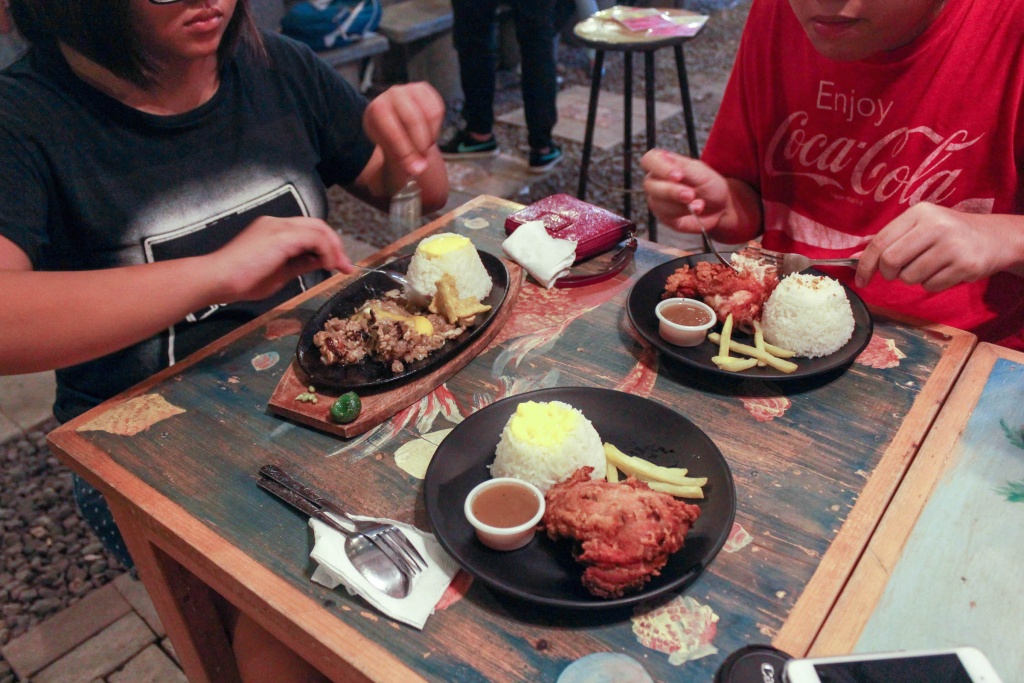Some time ago, I worked as a bartender at a trendy new izakaya in Makati called 12/10. The hours were difficult for a full-time student and the pay was barely enough to cover my transportation fees, but I fell in love with it. There really is something about the food industry that gets your blood flowing. Maybe it’s the thrill of figuring out a new spin on an old recipe. Maybe it’s the rapid turnover and the countless characters you get to meet and interact with. Maybe it’s the immediacy of satisfaction you get from seeing someone really enjoy what you made right in front of them. The spending money I got out of it was really just the cherry on top. And so here I am, lining up for a chili dog in StrEAT—the infinitely cool new food community along Maginhawa—feeling that all too familiar rush of excitement.
Restaurants are a dime a dozen these days, with every success giving birth to another chain or another franchise. And why not? The Philippines is a food-loving culture. The market is there and we are all too willing to supply the demand. But somewhere down the line, as we pass by the third Jollibee on the block, things start getting a little monotonous. Another ramen house. Another Chinese-fusion place. I’m not saying this is true about the entire industry, but it does make sense from a business perspective to put up something tried and tested.
And then comes along the food truck, as colorful and creative as our local jeepney (with none of the nonsense that comes with it). Made popular locally well before Jon Favreau hit the road on Chef (2014), food trucks seem to be a trend perennially on the cusp of critical mass. And so these restaurants-on-wheels have been enjoying a niche market growing at a snail’s pace—ever popular, but never quite mainstream popular.

Rolling into the scene
The appeal of food trucks actually predates the truck itself by decades. Street food has always been sold along sidewalks, their vendors pushing or pedaling their carts up and down avenues in search for hungry pedestrians. Although they are widely popular still, brick and mortar restaurants have been the default choice for those with a little more cash to spend. Food trucks, as we know them today, are the marriage of the two. All the bleeding edge experimentation of a concept kitchen, hawking goods on a sidewalk—gourmet on the go.
Streat: Maginhawa Food Park is a collection of food vendors built out of the bones of old trucks and various shipping containers. Cheska Del Castillo, one half of the mother-daughter team behind StrEAT, describes the space as a laidback, eclectic mix of container stores and mobile concessionaires. “[This] was a concept developed by the StrEAT team to ensure sustainability and to have people come back because there would always be something new, with food trucks rotating almost monthly.”
This same model is reflected in a number of similar establishments all over the country. Maginhawa’s southern counterpart, Aguirre Avenue in Parañaque City, has the rather predictably named Aguirre Food Park. While the Backyard Food Truck Community (FTC) in Dasmariñas, Cavite serves as both breeding ground for mobile culinary concepts and watering hole for indie artists. Even the Ateneo had its own tenant parked along Red Brick Road, the much celebrated (and much missed) Barista Box.

Not-so-free parking
Abroad, it’s the genuine mobility of food trucks that makes them popular. Moving from city to city, these trucks pull in droves of customers through a mixture of social media marketing and good location scouting. Securing the permits to sell their goods by public parks and boardwalks pretty much assures mobile vendors solid revenue. It’s the widespread availability of places with high foot traffic that makes food trucks such a viable business model in places like the United States and United Kingdom.
Like any imported trend, however, the industry takes on a new form in its local iteration—and that’s a direct response to the prevailing conditions of the market. Here, public spaces with high foot traffic are, more often than not, shopping malls. So other than the occasional concert or pop up event, it falls on places like StrEAT to house these businesses.
Even more problematic are the legal complications behind running a food truck. Cities like Taguig have established ordinances for mobile vendors, but legislation often defines mobile vendors as street food hawkers, selling fish balls and other more traditional fare. This lack of recognition from the public sector complicates things, bringing rise to groups like the Metro Manila Food Truck Association, which helps develop these independent businesses.
But despite the self-organization of the food truck industry, its stunted growth seems to be rooted all the way down to its model. “A food truck business is assumed to have no 'permanent' location; which secures income on a regular basis,” Del Castillo says. “Trucks are much like the freelance industry, who earn a lot—and sometimes more than expected—seasonally versus the corporate world with an assurance fixed monthly income.” Even on the daily, food trucks sell only on peak hours, whereas traditional restaurants enjoy more or less steady earnings throughout the day. “I think it’s that kind of fluctuation that more conservative entrepreneurs are not comfortable with yet.”

Looking past the truck ban
Food trucks in the Philippines may not compete with restaurants like they do abroad, but perhaps that’s a good thing. Shifting cultural trends and our rising economy have brought growing success to niche markets. More and more, longstanding market giants like Starbucks and San Miguel have begun finding competition in third-wave indie cafés and microbreweries.
“Especially now with the concept of 'pop-ups'—the audience now is most responsive to things and events that seem genuine and at its grassroots,” Del Castillo says. “Commercialism is viewed negatively by that niche market. The audience now believes and wants to be a supporter of start-ups because it is more emotive and give a greater sense of what it is to belong in a community.”
Back at StrEAT, I witness this sense of sincerity firsthand. Whereas the most tactile connection most restaurant diners have with the kitchen is the lunch menu, a food truck offers a stripped down experience. Customers walk up to a truck, and see it for what it is: A bare bones operation, little more than a kitchen and a service window. Although there are only a limited number of parking spaces for them to sell their goods, the beauty of a food truck, really, is its simplicity. With physical space and location planning no longer issues, the food truck proprietor can concentrate on what’s most important: The food.
Like all the other parks, StrEAT has a rustic, haphazard feel to it that the organizers put euphemistically as al fresco. But I like to think of it as raw, real. Between the hand-drawn signage and the monobloc seating, there seems to be a shaking off of pretense here. The community is built around good food, populated by the people who love making and enjoying it. I watch the cooks whip together my hotdog from scratch, scooping toppings out of Tupperwares with little more than a seasoned eye to measure out the proportions. It’s thrilling, really. And as I walk towards my spot on the other end of the park, chili con carne dripping down my forearm with each bite, I’m sure they’re just as thrilled as I am.